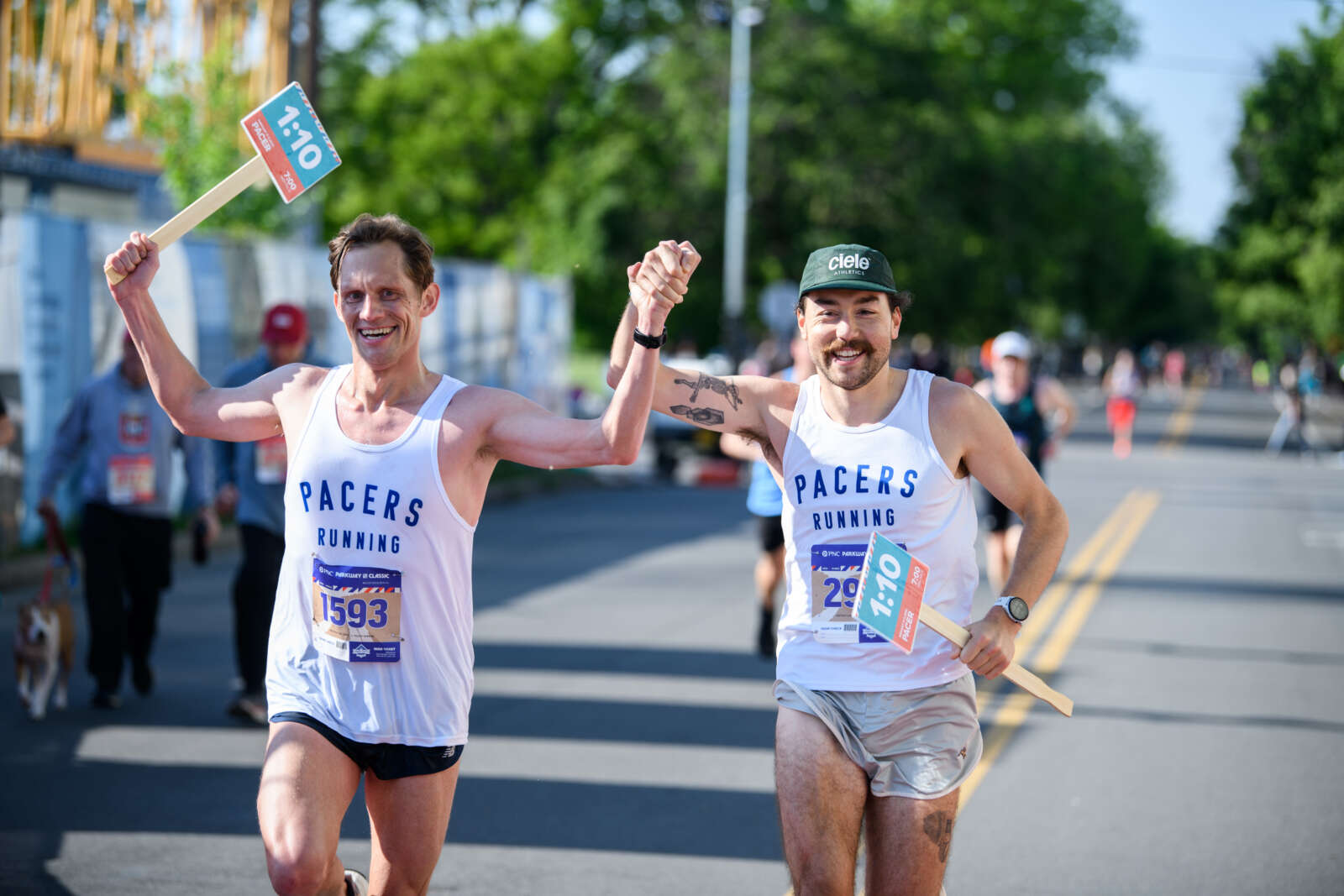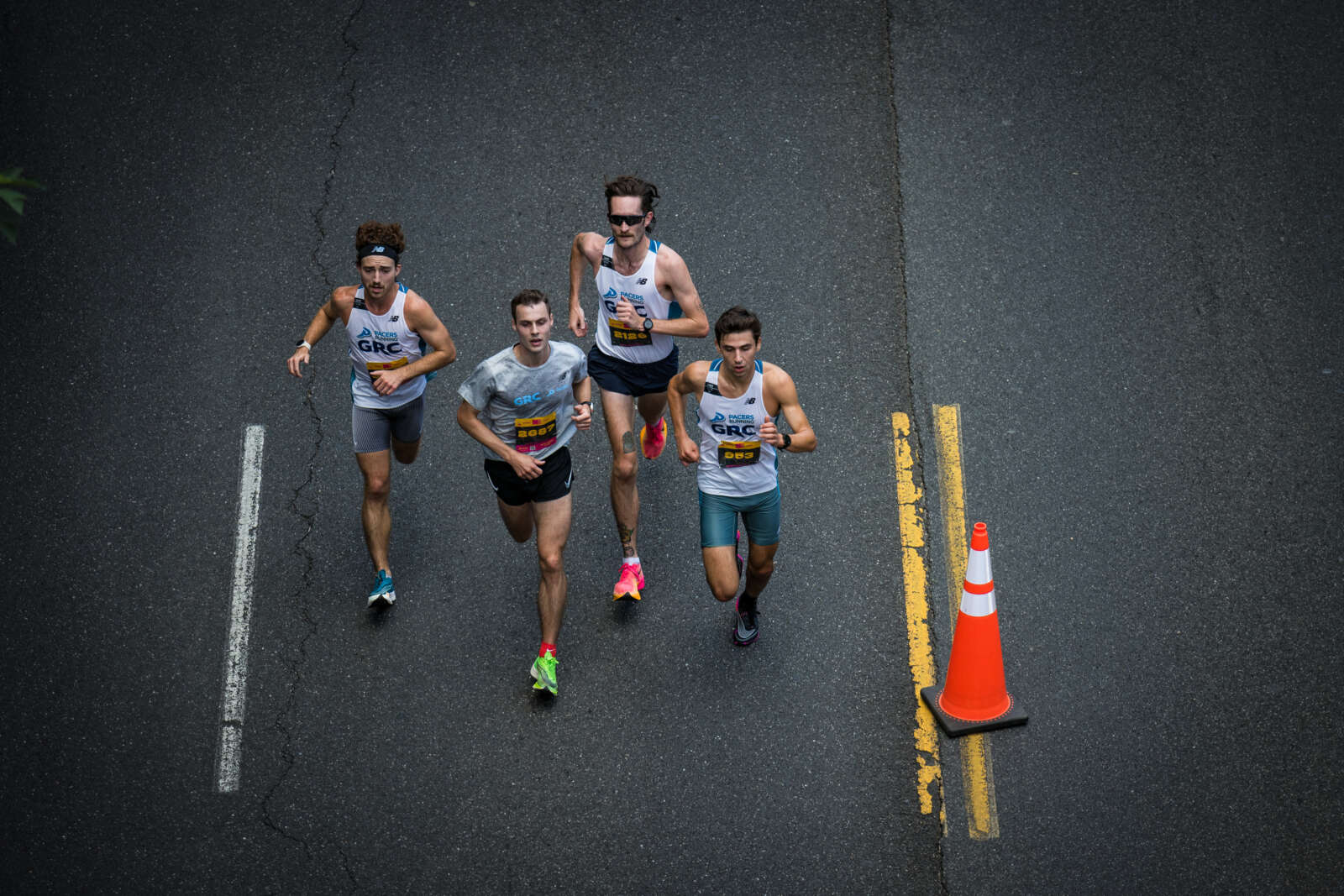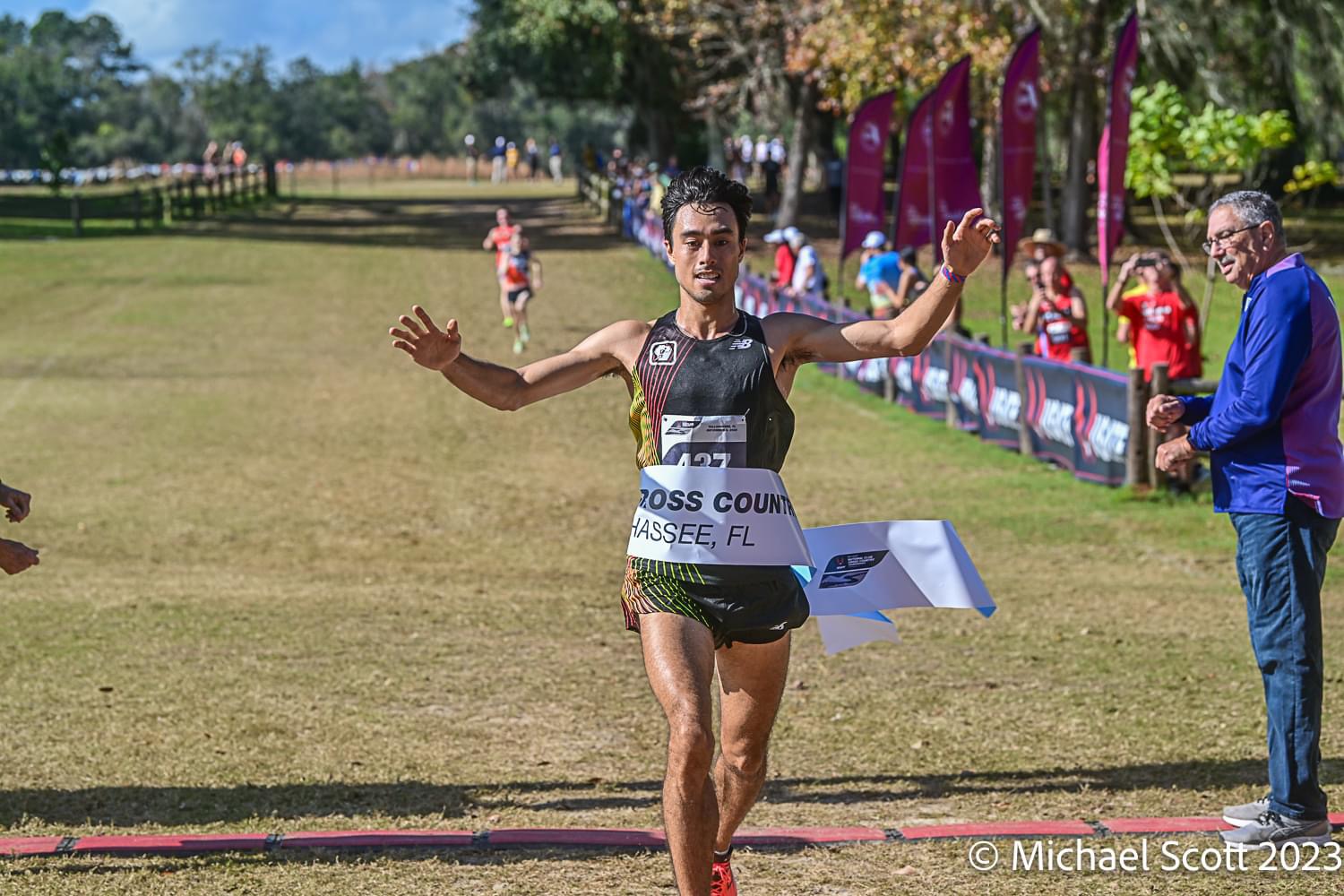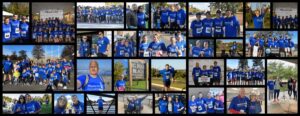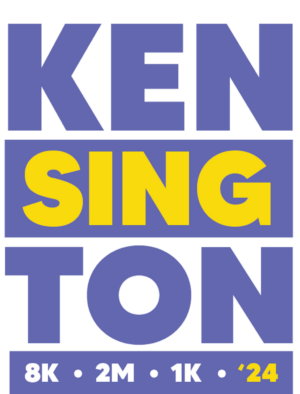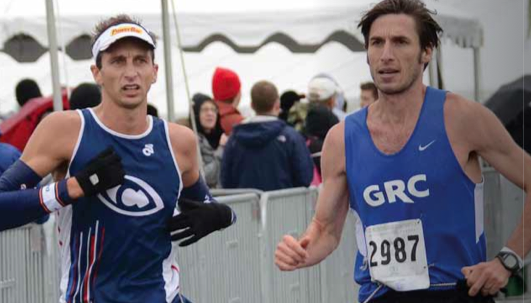
(The Woodrow Wilson Bridge Half Marathon will once again serve as the Visually Impaired Half Marathon Championships)
I don’t know how I want to write this.
I could write that Aaron Scheidies is the best visually-impaired triathlete in the world.
I could write that Aaron Scheidies is a world class triathlete who is visually impaired.
Both sentences, I suppose, are true. And if you go to Aaron’s website, as I did after I agreed to serve as his guide at the recent Woodrow Wilson Bridge Half Marathon, you can go to the “news” section and find many such articles filled with those kind of sentences. Aaron is an amazing athlete. He is as dedicated to his sport as anyone you will ever meet.
But I think, after a weekend spent getting to know this 30-year-old athlete from Seattle, I think what I want to write the most is that Aaron, who in his childhood suffered from macular degeneration, in no way views his blindness as a disadvantage.
To compete at his highest level, all Aaron needs is a guide – someone to watch his path, someone to tell him when to turn, someone to advise him on the tangents, someone to let him know where the water stops and mile markers are and what the clock reads.
Aaron’s guide is not a pacer.
Aaron’s guide, for the most part, is a set of eyes.
Perhaps a month before the race, Jerry Alexander, the coach of Georgetown Running Club, which I belong to, sent out an email encouraging members to serve as guides for participants in the event’s National Industries for the Blind’s championship for the visually impaired. Our club provided guides last year, and many of us again signed on this year.
And to be honest, I can’t remember the exact reason I offered to do it. It was more of an impulse.
But get this:
On Friday, Oct. 5, Aaron, traveling alone, landed at Reagan National Airport on a red-eye flight.
He took the Metro to the Eastern Market stop in Capitol Hill. From there, he planned to walk to the Starbucks on Pennsylvania Avenue, where he would hang out until his host was able to meet up. Our plan, which we had established through email, was to meet up after I got off from work and practice running together.
That morning, I took my dog to the nearest dog park. And as I looked up from unhooking my dog’s leash to let him roam, someone I recognized was walking toward me.
He asked me how to get to Starbucks. As it turns out, he was a just a block or two off course.
“Aaron,” I said. “You’re not going to believe this. I’m Dickson.”
We were flying down the opening downhill from Mount Vernon, a bungee cord wrapped around our waists. He had told me he liked downhills. He would probably get out a little fast, he said, then settle into a pace that felt right.
His personal best in the half marathon heading into the Woodrow Wilson Bridge Half Marathon was 1:20, and from the start he was easily on pace to shatter it.
I ran off his left shoulder.
Fairly quickly, the field spread out across the wide George Washington Memorial Parkway. At times, we ran with someone; more often we were alone, zig-zagging across the road to hit the tangents, for which my guide were in fact the runners ahead of us.
Move a little to the left, I’d say. A little more.
It was cool and rainy; we were both glad we had gone with gloves.
We would lose a little bit of time on the water stops: I would have to swing behind him to his right to grab the cups, and I don’t think I ever quite got it down.
Other than that, things went pretty smoothly. Even better, Aaron was running steady, clocking 5:45s on the more downhill miles and closer to 6:00 on the hillier ones.
The bridge is where this race gets serious. It’s a long climb to the top, the concrete pounding your legs. Then it’s a long downhill, followed by – for Aaron, anyway – a lot of me saying, “Left, right, left, right,” as we snaked back to the final couple miles in National Harbor.
He went through 10 miles in 59:17, and when we hit that big hill in National Harbor, I could tell he was really working – he was there.
He passed Mile 12 in 1:11:30.
“We can break 1:18,” he said, as we hit that off-road stretch sighted runners like to complain about. There were, truthfully, some big rocks in that path, some bumps, some super-tight turns.
I could not really be much help.
“It’s not a big deal,” he said, as he exited the path and made his final half-mile charge towards the finish line in National Harbor.
Those last couple minutes, for some reason, I thought hard about these 13 years – this journey that has taken me all the way from my teens to my 30s, and how ineffably grateful I was to be along for this particular ride.
There are the good races, more bad races. There are the highs, the lows.
But the journey, and the runners, will always be worth it. Aaron crossed the line in 1:18:05. He bent over, spent. I patted him on the back. And having already memorized this particular course, he then guided me to our bags.
Visit www.runwashington.com to hear a podcast about the visually impaired runners who competed at the VI Half Marathon Championships.
Recent Stories
Looking for our race calendar? Click here Submit races here or shop local for running gear
James W. Foley Freedom Run
Inspired by the moral courage of freelance journalist James Foley, the mission of the nonprofit Foley Foundation is to secure the freedom of Americans held captive abroad unjustly by terrorist organizations or rogue states, and to promote journalist safety.
The
Kensington 8K Race
Since 1994, the Kensington 8K Race has been a favorite DC area fall race – a fun, fast event with beauty, challenge, and excitement. Run it this year on Saturday, September 21, 2024!
The 8K distance is $39, with a


